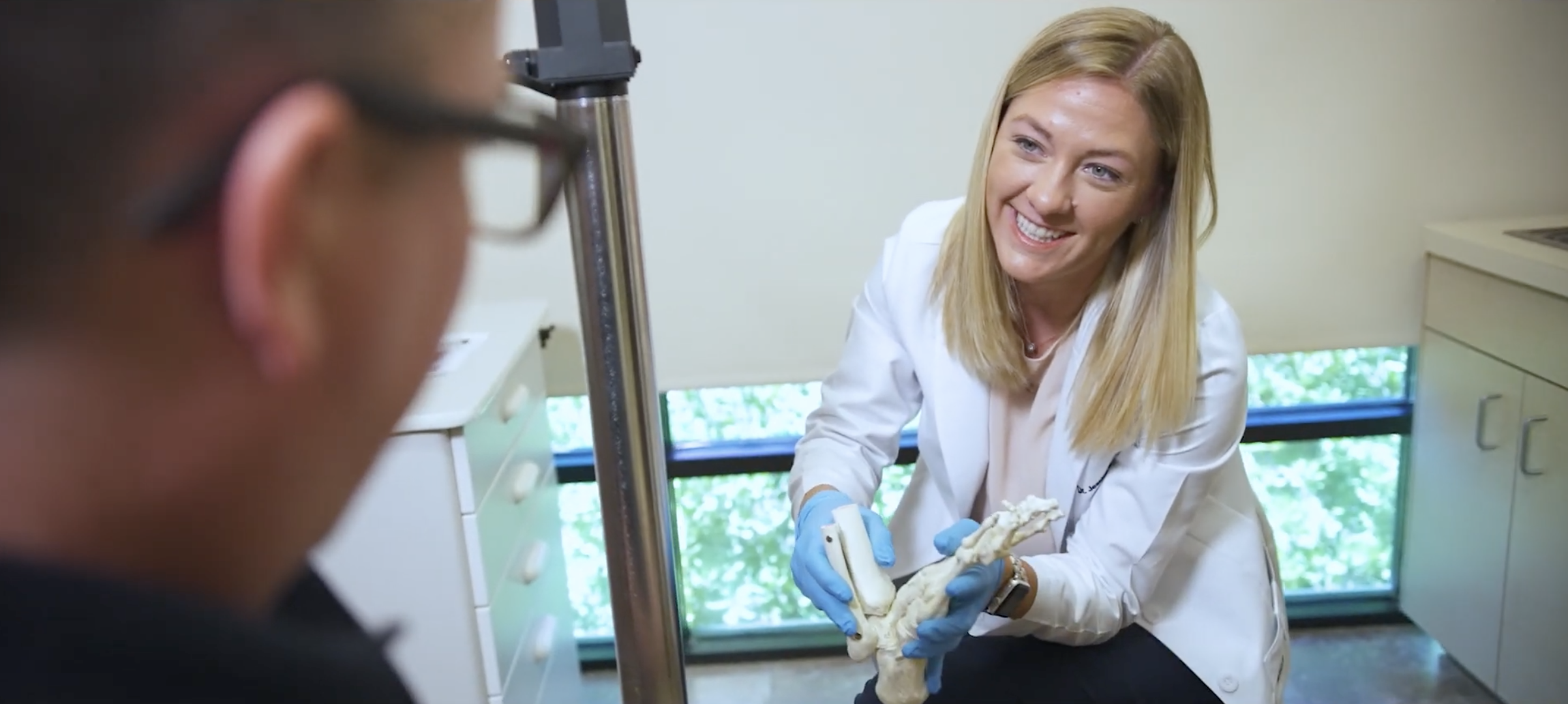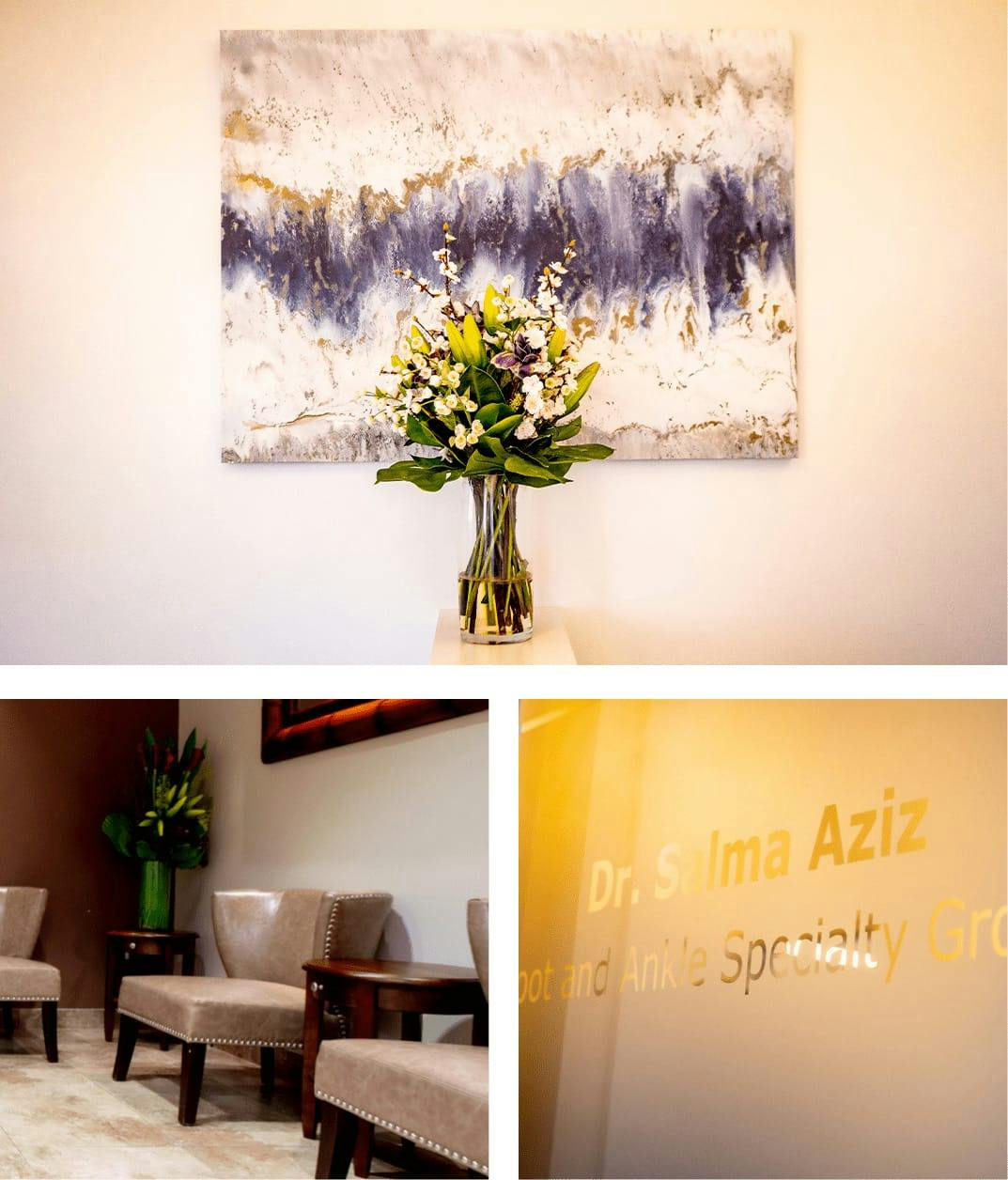Total ankle replacement (TAR), also known as total ankle arthroplasty, is a surgical procedure that surgeons use to treat ankle fractures, arthritis, and deformities by various conditions. We are happy to provide this service at our podiatry office in Rancho Santa Margarita and Newport Beach.
Surgery Details
If non-surgical treatment options cannot relieve the ankle pain being caused by arthritis, surgery will most likely be needed.
In total ankle replacement surgery, the joint is removed and replaced with an artificial implant made of metal and plastic. If appropriate, some patients can qualify for custom CT-guided implants.
Recovery
After total ankle replacement surgery it’s normal to experience occasional swelling and numbness for a few months, which should continue to resolve. You will be unable to bear weight until the incision heals, which is typically around two weeks. After this, you will begin weight bearing in a protective boot, and you will also begin physical therapy. The goal is to have patients out of their protective boot and returning to regular shoe wear at six weeks.









